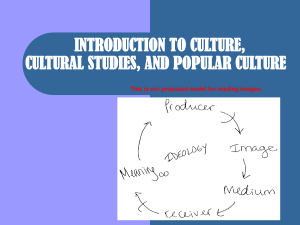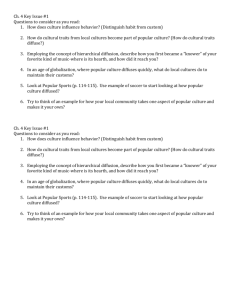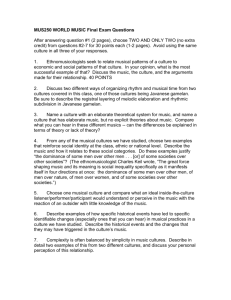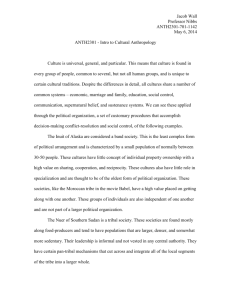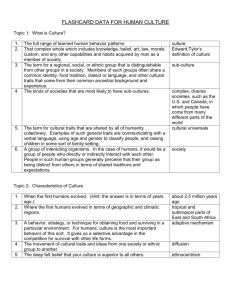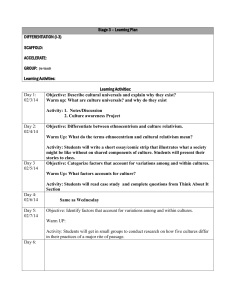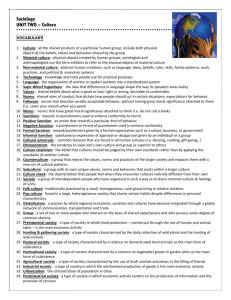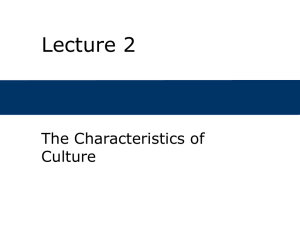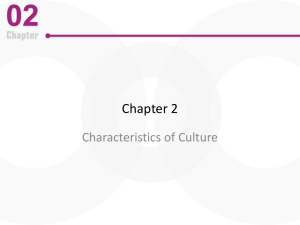Cultural Trait Analysis
advertisement
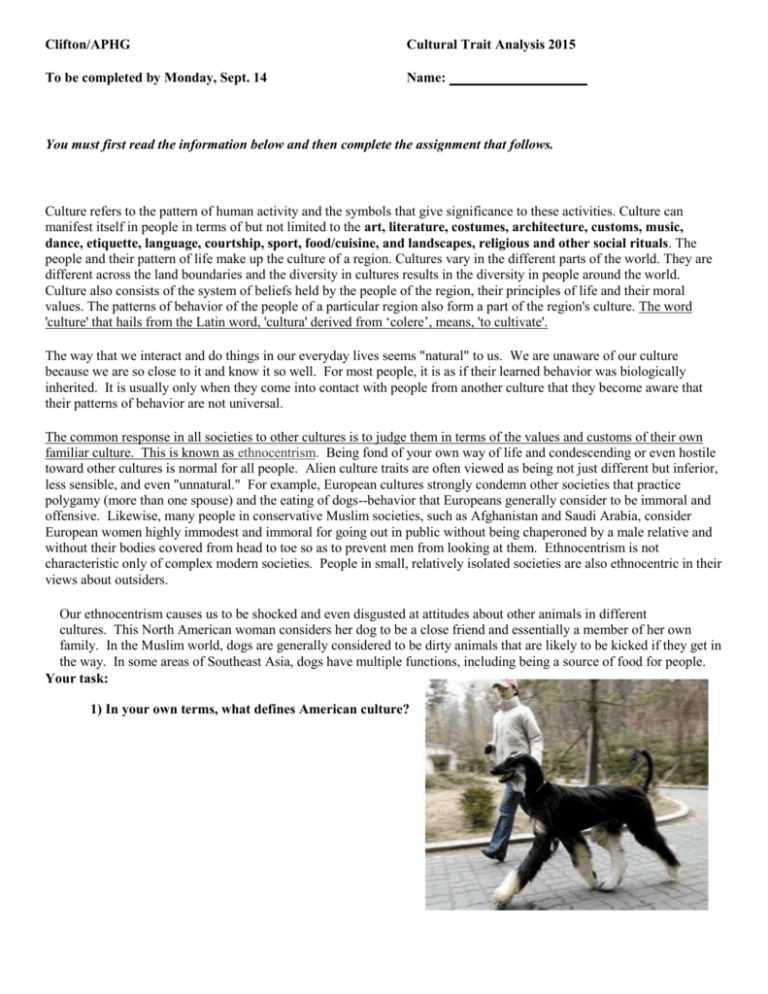
Clifton/APHG Cultural Trait Analysis 2015 To be completed by Monday, Sept. 14 Name: You must first read the information below and then complete the assignment that follows. Culture refers to the pattern of human activity and the symbols that give significance to these activities. Culture can manifest itself in people in terms of but not limited to the art, literature, costumes, architecture, customs, music, dance, etiquette, language, courtship, sport, food/cuisine, and landscapes, religious and other social rituals. The people and their pattern of life make up the culture of a region. Cultures vary in the different parts of the world. They are different across the land boundaries and the diversity in cultures results in the diversity in people around the world. Culture also consists of the system of beliefs held by the people of the region, their principles of life and their moral values. The patterns of behavior of the people of a particular region also form a part of the region's culture. The word 'culture' that hails from the Latin word, 'cultura' derived from ‘colere’, means, 'to cultivate'. The way that we interact and do things in our everyday lives seems "natural" to us. We are unaware of our culture because we are so close to it and know it so well. For most people, it is as if their learned behavior was biologically inherited. It is usually only when they come into contact with people from another culture that they become aware that their patterns of behavior are not universal. The common response in all societies to other cultures is to judge them in terms of the values and customs of their own familiar culture. This is known as ethnocentrism. Being fond of your own way of life and condescending or even hostile toward other cultures is normal for all people. Alien culture traits are often viewed as being not just different but inferior, less sensible, and even "unnatural." For example, European cultures strongly condemn other societies that practice polygamy (more than one spouse) and the eating of dogs--behavior that Europeans generally consider to be immoral and offensive. Likewise, many people in conservative Muslim societies, such as Afghanistan and Saudi Arabia, consider European women highly immodest and immoral for going out in public without being chaperoned by a male relative and without their bodies covered from head to toe so as to prevent men from looking at them. Ethnocentrism is not characteristic only of complex modern societies. People in small, relatively isolated societies are also ethnocentric in their views about outsiders. Our ethnocentrism causes us to be shocked and even disgusted at attitudes about other animals in different cultures. This North American woman considers her dog to be a close friend and essentially a member of her own family. In the Muslim world, dogs are generally considered to be dirty animals that are likely to be kicked if they get in the way. In some areas of Southeast Asia, dogs have multiple functions, including being a source of food for people. Your task: 1) In your own terms, what defines American culture? 2) List ten cultural traits that help define American culture? 1) 6) 2) 7) 3) 8) 4) 9) 5) 10) 3) List 5 cultural traits that you notice in society today that are “un-American”. Describe why you feel as though each is “un-American” 1) 2) 3) 4) 5) 4) Choose THREE regions and/or countries of the world (OTHER THAN NORTH AMERICA) and discuss at least TWO cultural traits from each that would be considered DIFFERENT or not NATURAL from the perspective of your group members. Refer to the last page of this packet for assistance. You may need to complete this at home. 1) 2) 3) Remember, there are many immigrants living here in the United States and their culture may be exhibited while they are living here. Also, there are many folk cultures that exist side by side with popular culture here in the U.S. and around the world. Please do not use the examples I gave you above as part of your response. Make sure you explain why the cultural trait is exhibited (underlying reason) and why you consider it so DIFFERENT or UNNATURAL here in our culture. Some links to get you started: http://library.thinkquest.org/18802/everfood.htm http://www.analytictech.com/mb021/cultural.htm http://www.cyborlink.com/ http://www.chinatravel.com/facts/traditions-and-custom/traditional-etiquette-and-taboos.htm http://en.wikipedia.org/wiki/Taboo_food_and_drink http://www.factmonster.com/ipka/A0767654.html


